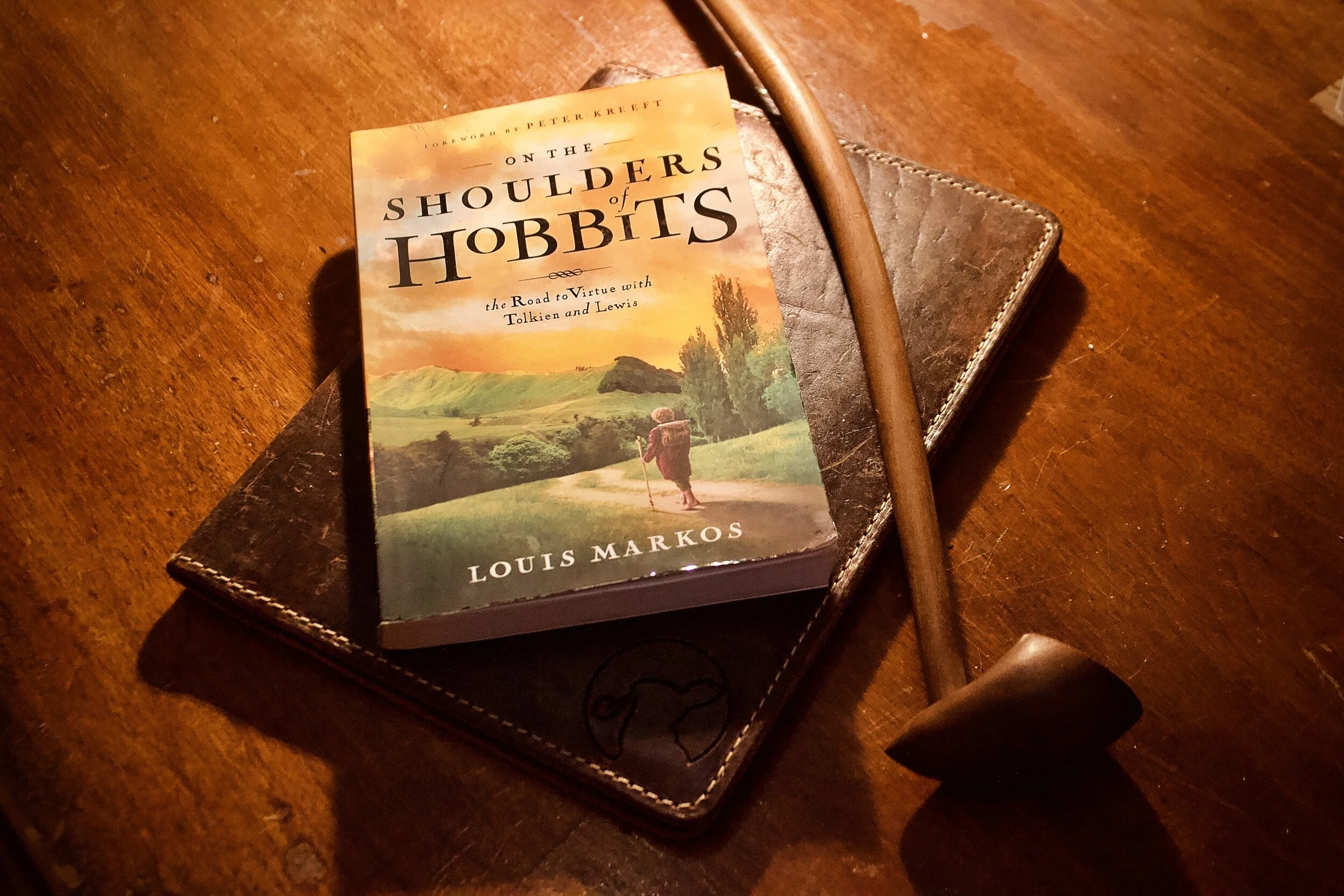Book Review: On The Shoulders of Hobbits
“Fairy tales do not tell children the dragons exist. Children already know that dragons exist. Fairy tales tell children the dragons can be killed.”
I was eight years old the first time my mom took me through the wardrobe and into Narnia. It was one of the first books I ever read on my own and my imagination has never been the same.
Twelve years later, as a sophomore in college, someone introduced me to The Hobbit and The Lord of the Rings and I was transported into the Shire, where my imagination took another expansive leap. Like so many others, I’ve been dazzled by the writings of C. S. Lewis and J. R. R. Tolkien. In fact, I sometimes feel my truest self when brushing past musty coats and frosty tree branches and once again entering the pages of Narnia.
Through the years, the stories of hobbits and elves, talking trees and beavers seeped into my soul and, as they did, transformative things happened in my heart and mind. Especially as a child, I didn’t know I was learning. I didn’t know neural pathways were being formed through epic battle scenes and roaring lions that would shape my worldview and sense of justice for the rest of my life. But they were.
On the Shoulders of Hobbits: the Road to Virtue with Tolkien and Lewis (Moody Publishers, 2012), is a look into the underlying themes of The Lord of the Rings and The Chronicles of Narnia and their power to communicate that which is beautiful, true, and worth striving for. Reminding readers of days past, when values were shaped and absorbed primarily through stories, author Dr. Louis Markos, a professor and Scholar in Residence at Houston Baptist University, dives into the worlds of Lewis and Tolkien in order to uncover for and remind us of hidden gems of virtues and values; nuggets of wisdom and beauty tucked in obvious and sometimes less obvious places. Markos, a public lecturer on Lewis and Tolkien, split the book into four parts—The Road, Classical Virtues, Theological Virtues, and Evil—taking readers on a guide through the mystical lands of Middle Earth and Narnia and showing how faith shaped the writings of both Tolkien and Lewis.
As such, this book is, by design, not a scholarly work, but a guide to the values found in The Lord of the Rings and The Chronicles of Narnia, a guide that was a fun refresher and made me want to go re-read all the books in both series again. One of my favorite quotes from On the Shoulders of Hobbits came from the introduction as Markos shared his heart for the book.
“Stories are meant to be shared, not read in isolation, and it it is my hope that this book will initiate fruitful dialogue between parents and children and encourage them to enter as a family both into the adventures themselves and into the greater adventure of living, choosing, and yearning in a fallen world that is nevertheless filled with meaning, purpose, and beauty.”
How are we to navigate the meaning, purpose, pain, and beauty along this road of life? Markos proposes both Lewis and Tolkien’s stories arm us for that journey. After all, there is a reason LOTR and Narnia have lasted for nearly a century. Why should they continue? Why should we care? Because we need these stories to continue shaping us and the next generation. Because we need to soak them up and draw on them for courage, endurance through adversity, and a hope that lasts beyond this world. We need to be reminded that fairy tales, as G.K. Chesterton said, don’t tell children that dragons exist but that they can be beaten. These stories show how corruption and evil destroy and how joy and goodness prevail and Markos helps the reader appreciate those themes even more.
“The stories that Tolkien and Lewis spin are pretty, yes; old fashioned, yes; the fruit of private daydreams, yes. But they are also stories that have vastly enriched an age that so desperately needed them. All ages at all times need stories, but ours needs them so much more. True, of entertainment, and even of fantasy, we have no lack. But we are starved for the kind of stories that will supply us with the fullness offered so freely in the Chronicles and The Lord of the Rings.” (187)
Imagine our starved world nourished with stories that embodies, like Frodo, Aragorn, and Aslan, Markos’s explanation of true courage, and then imagine it doesn’t just stop with consumption of those stories but personal ownership: “True courage is not so much about self-glorification as it is about self-emptying: being willing to be the bridge over which others may cross to safety. It does not rest on anything so flimsy or ephemeral as ‘self-esteem,’ but proceeds instead out of an inner integrity that knows who it is––and where it is going––and can therefore fix its gaze outward rather than inward.” (68)
While I don’t feel I discovered much of anything new in this book, I appreciate its analysis, which prompts conversation, along with the necessary reminder that stories are divine gifts; a work of imagination from the Divine storyteller.
For the downside, I found it a bit repetitive and wish there would have been more depth, but it is easy to read and would serve well in a parent/older child situation or a book club format where people can take it deeper through discussion. Consider gathering your own group of Inklings to read and discuss this together, rehearsing in community the timeless values and lessons to be gleaned from Middle Earth and Narnia. For in doing so, we will remember that our lives are stories within a greater story, and all are written in ink of grace by an Author who makes no typos.

